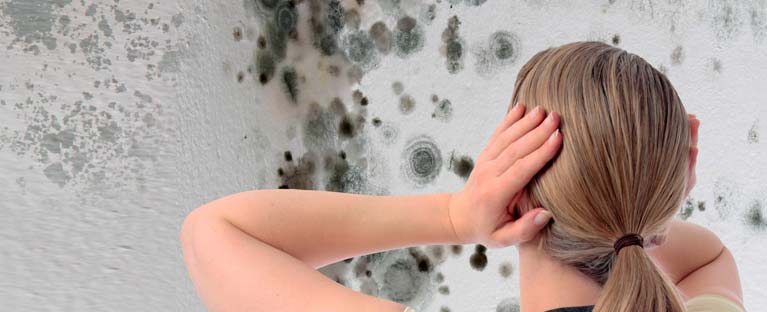
Mold, simply, comes from moisture, but it can be much more complicated than that. Molds are fungi, meaning they are organisms incapable of creating their own food supply. This means that molds form atop a host, and because molds thrive in moisture, they commonly form in soils, atop food sources, in areas of increased hydration and in many places inside our homes as homes tend to trap moisture between their walls. Once a mold has formed, they reproduce and move using spores, tiny, floating pieces that are flung from a mold source, creating a new organism wherever they may land.
Where we can find molds?
We most commonly find molds indoors because homes and other structures trap moisture, allowing various molds an ideal environment to form, grow, and reproduce via spores. Further, homes with poor ventilation contribute to higher humidity levels, leading to condensation. This increases the chances of mold growths. Mold notably forms on expired food items, or food items that have been left out. This is because, as previously stated, mold needs a host, and food sources have a naturally high level of moisture for these fungi to feed from. This is why it is common to find mold formations atop or inside foods, and also why mold is a sure sign that a food has become expired or rotten.
What is Mold Role In our Planet ?
Molds actually play a natural role in the breaking down of organisms and food substances, so seeing mold formations inside food means that the mold has begun breaking down the substance. Other common sources of mold growth include washing clothes, cleaning dishes, cooking, using air humidifiers, and really any other household task that requires the use of water, or enables a higher content of condensation and hydration. Mold can also form and come from a variety of common building materials. This fungi is commonly found in treated woods, though in small amounts. However, the molds found in building materials can leave the source material and travel, by their reproductive spores, to other areas of a homes or building, landing atop moisture-rich spots and multiplying. And while it may seem that mold is only found in our homes, as this is where it is most seen and most interacted with, mold is found almost everywhere outdoors. In fact, more often than not, mold formations inside homes or buildings started from an outdoor source. With the exception of winter months, depending on where you live, mold forms everywhere, all the time, latching onto soil fragments, forming in puddles or wet grass, living inside natural organisms such as trees, leaves, flowers, and many other materials that are adequate to retain and restore moisture. From here, mold spores can travel through open windows and doors, window condensations, and home ventilation systems to then begin formations inside of a home or building.

